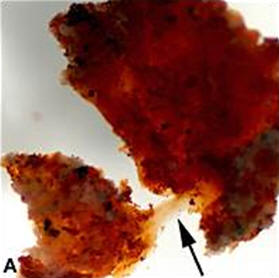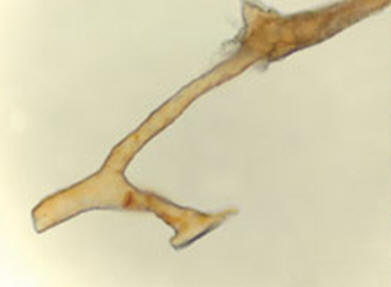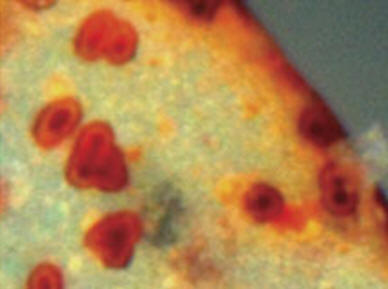
| Unfollilized T-Rex Bone Home |
The following images are of elastic material found inside a T-Rex femur bone based on research by Mary Higby Schweitzer of North Carolina State University. The research was funded by North Carolina State University and grants from N. Myhrvold and the National Science Foundation.

The arrow above points to a tissue fragment that is still elastic. It begs belief that elastic tissue like this could have lasted for 65 million years..(From www.msnbc.msn.com/id/7285683 /)

The flexible branching structures in the T. rex bone were justifiably identified as “blood vessels”. Soft tissues like blood vessels should not be there if the bones were 65 million years old.

These microscopic structures were able to be squeezed out of some of the blood vessels, and can be seen to “look like cells” as the researchers said. So once again there is scope for Dr Schweitzer to ask the same question, “How could these cells last for 65 million years?”